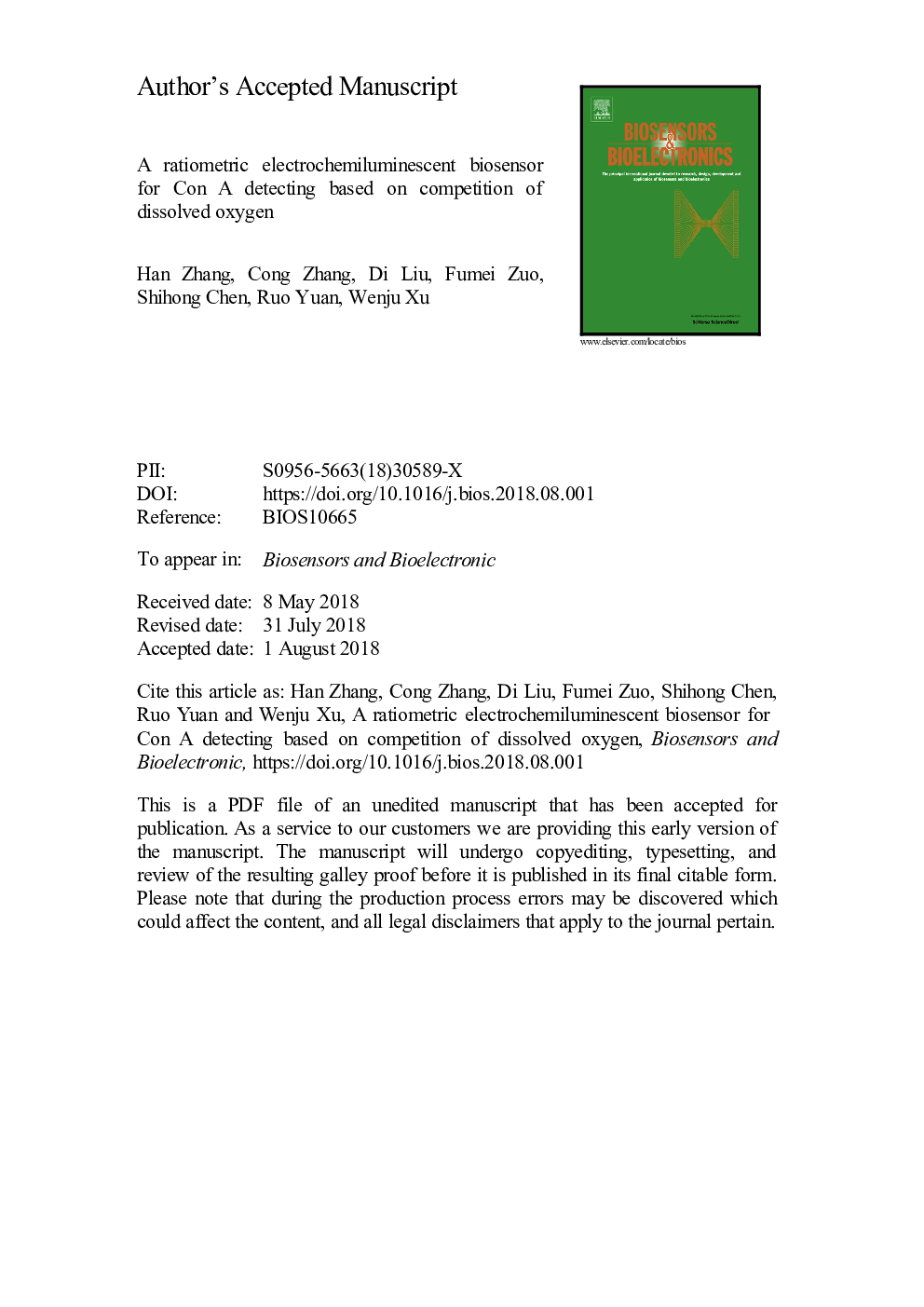| Article ID | Journal | Published Year | Pages | File Type |
|---|---|---|---|---|
| 8947792 | Biosensors and Bioelectronics | 2018 | 27 Pages |
Abstract
A novel ratiometric electrochemiluminescent (ECL) biosensor was designed for the detection of concanavalin A (Con A) based on two ECL emitters competing for the dissolved oxygen (O2). In this strategy, CdTe quantum dots (QDs) were used as the cathodic emitter and N-(aminobutyl)-N-(ethylisoluminol) (ABEI) was used as the anodic emitter. With the presence of dissolved O2 utilized as co-reactant, CdTe QDs showed an ECL emission at ââ¯1.7â¯V, and ABEI showed an emission at +â¯0.6â¯V. Phenoxy-derivatized dextran (Dexp), as a recognition element, was immobilized by graphene oxide functionalized CdTe QDs (G-CdTe QDs) to recognize Con A, and further combine with Dexp, gold and platinum nanoparticles decorated ABEI (Dexp-Au-Pt-ABEI) to form a sandwich structure. With the increasing concentration of analyte Con A, the ECL signal of cathodic CdTe QDs decreased and the anodic response of ABEI increased, thus achieving a ratiometry detection of Con A with a wide linear range from 1.0â¯Ãâ¯10â4 ng/mL to 10â¯ng/mL. The detection limit was low to 3.0â¯Ãâ¯10â5 ng/mL. This proposed ratiometric ECL biosensor not only conquered the false errors caused by external interferences, but excluded the disability caused by exogenous co-reactant via the application of common dissolved O2. It also exhibited an excellent stability, selectivity and reproducibility.
Related Topics
Physical Sciences and Engineering
Chemistry
Analytical Chemistry
Authors
Han Zhang, Cong Zhang, Di Liu, Fumei Zuo, Shihong Chen, Ruo Yuan, Wenju Xu,
